
Policy Proposals for Unit Load Short-sea Shipping for Great Britain
- By Mike Garratt
- •
- 12 Jun, 2023
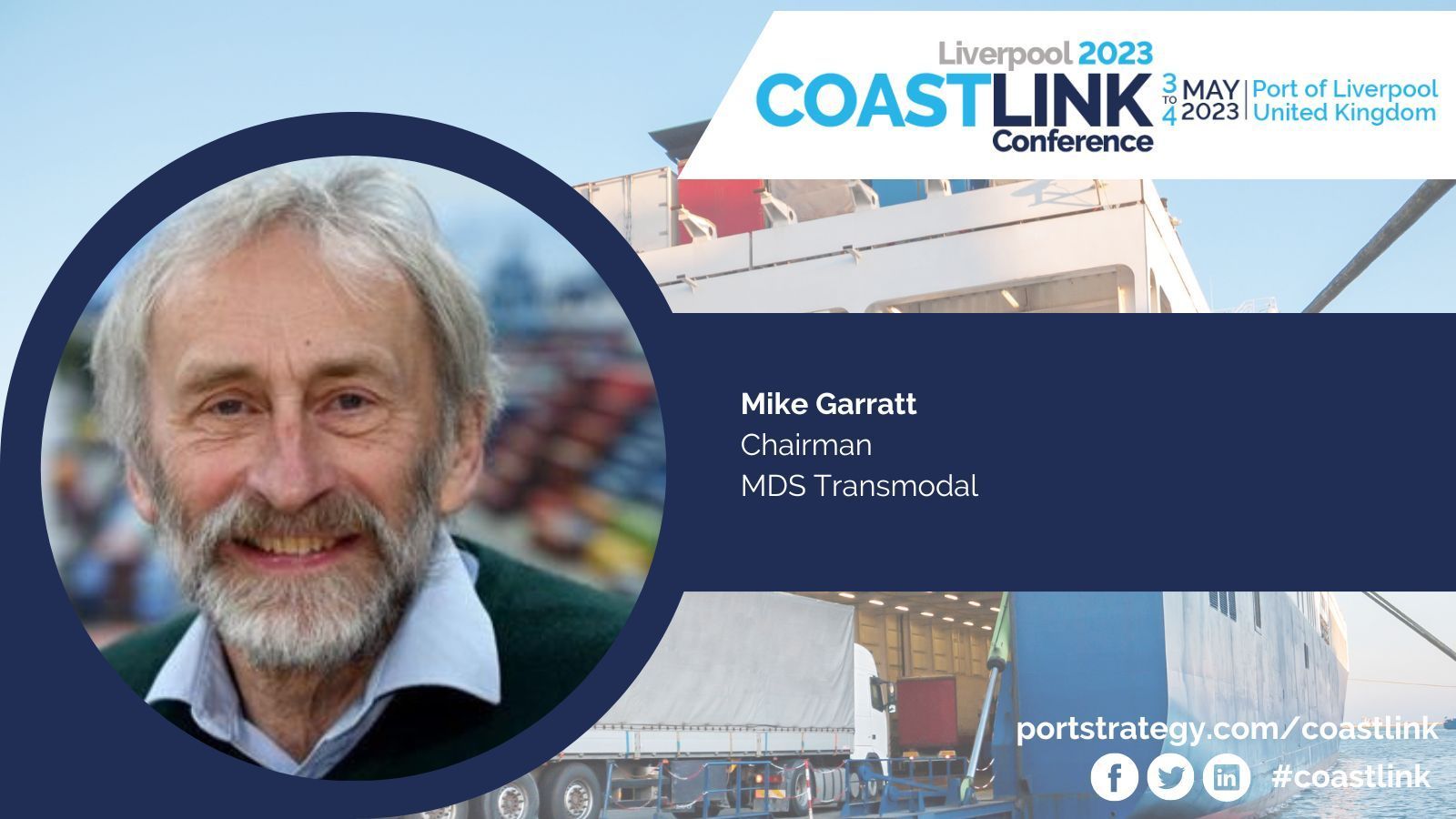
Mike Garratt, MDST’s Chairman, gave a presentation on a potential public policy approach to short sea unitload shipping between Great Britain and the continental mainland at the Coastlink Conference in Liverpool on 3rd May. The accompanied HGV mode of appearance at British ports - typically using the Short Straits - has been losing market share since 2016. This development will have secured environmental benefits by reducing HGV mileage and a policy of internalising the external costs of road freight would further help to reduce the environmental impact by diverting additional traffic to longer distance unaccompanied RORO services.
For unit load
cargo between the Continental mainland and Great Britain the choice lies
between two forms of unaccompanied units (containers and unaccompanied
trailers) and accompanied trucks. The overwhelming majority (91%) of the latter
enter Britain via the Dover Straits while almost all unaccompanied units enter
via the main estuary ports such as London, Immingham and the Mersey. This is a
reflection of the modal economics; providing ship-load quantities are
available, costs per unit are lower by sea than overland unless the cargo is
accompanied by a driver and tractor. The relative growth in the share of
accompanied haulage until a few years ago can be explained by the lower cost of
haulage in some Continental mainland countries; the share of UK registered
vehicles in this market fell to around 10%. By 2012, based on unitised tonnes
inbound to Britain, 38% of unitised cargo was carried by accompanied truck.
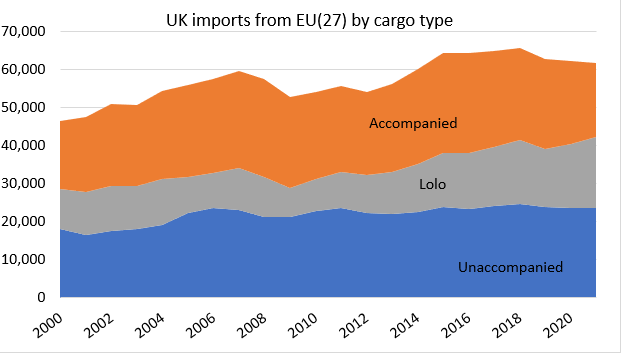
This trend started to turn around as the market appreciated the implications of BREXIT, which would involve Customs checks in the ports, an expensive proposition if the cargo was accompanied. The lower costs by sea provide a particular advantage for services to on the longer crossings to northern ports. To assess how the market has developed over the last decade we have:
· quantified cargo from EU countries by whether GB ports are south or north of Ipswich and on either the east or west coast of Great Britain.
· also quantified the total capacity of unit load services and number of sailings per week by all the operators, assuming a ‘unit’ is either 13.6m of ro-ro capacity or 2.25 TEU on lo-lo ships.
In summary, this analysis shows that while the number of sailing per day has fallen to both southern and northern markets, overall capacity has grown at the same rate (as the ships employed grew larger). However, the volume of cargo carried per sailing grew twice as fast to northern ports and therefore unit costs will have fallen to northern ports relative to southern ports. That is, a virtuous circle has developed in favour of northern ports. In parallel, the proportion of unitised cargo carried by accompanied truck fell by 10%.
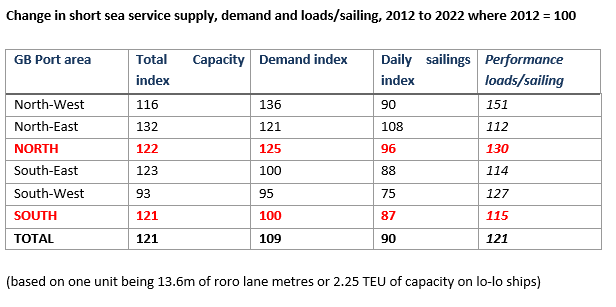
The market is therefore speaking; unaccompanied modes with northern ports are gaining market share.
That this trend is in the public interest is readily demonstrated by testing what would be the impact of HGVs paying their full environmental cost; this is a measure developed by the UK Department for Transport reflecting congestion impacts, emissions and operating costs, using MDST’s GB Freight Model. Such charging (which has the similar impact to road pricing based on the impact on different roads) has the effect of diverting traffic to longer sea crossings and reduced north-south haulage movements. The only road corridor that attracts more traffic is the M62 corridor because cargo is attracted away from thew Dover Straits.
The impact such a measure would have on road loadings is described below.
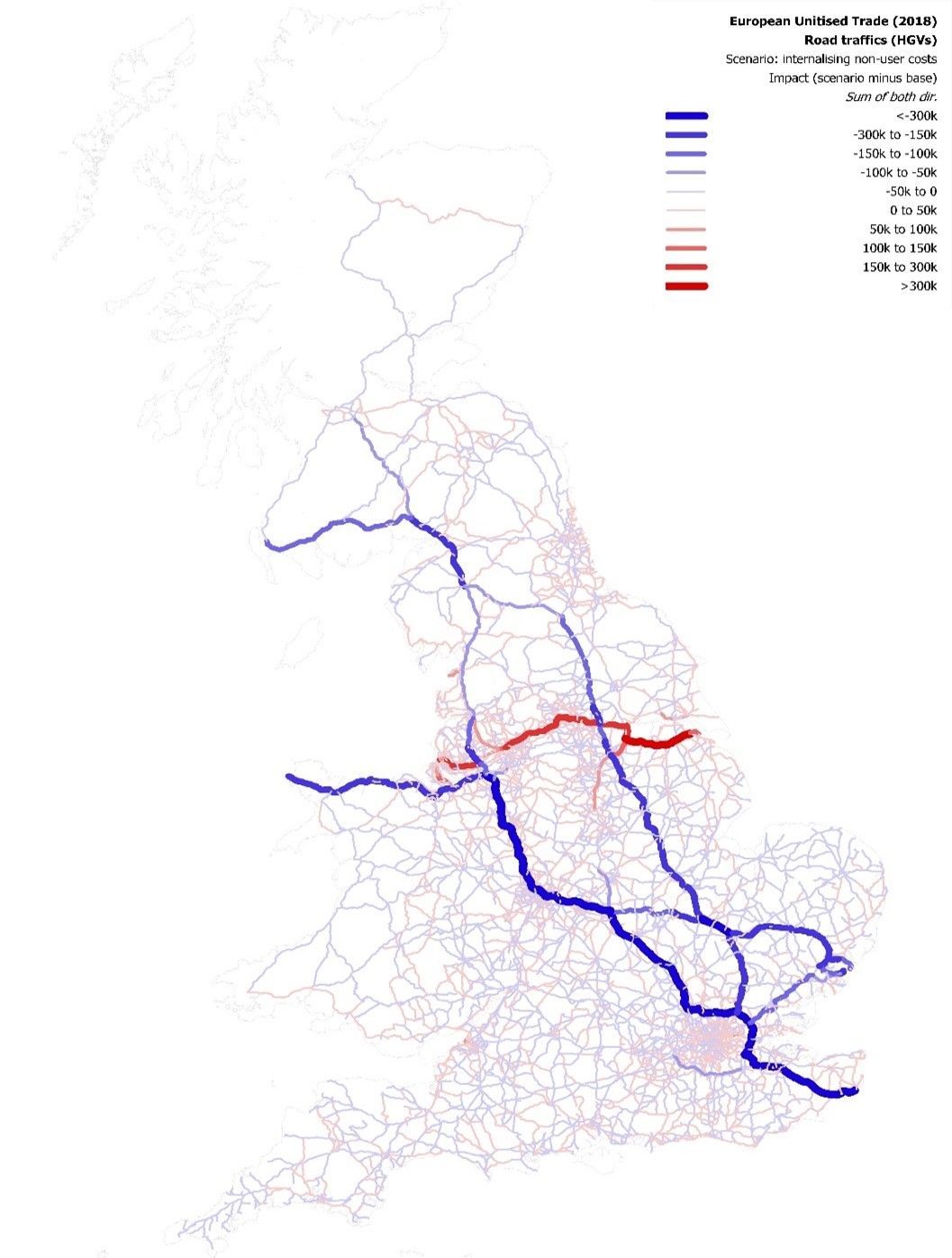
The impact is for freight costs to rise marginally, as operators seek to identify minimum cost solutions. However, the additional user cost is only half of that of the reduction in non-user costs, revealing that on the basis of the same environmental cost model that justifies the grant structure that supports grants for intermodal rail freight grants (Mode Shift Revenue Support) there is an overall benefit for such a further transfer of traffic from the Dover Straits to longer maritime crossings.
This implies that there is a case for interventions that encouraged such a further shift in mode and routing. This trade-off is illustrated in the table below, based upon model output reflecting around 10m unit loads p.a. between EU countries and Great Britain.
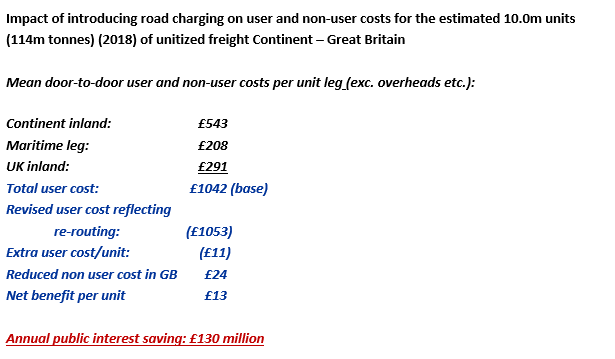
In summary, therefore, we can see that the market is already shifting towards the use of longer crossings served by ro-ro ships that carry only freight (trailers or containers) or lo-lo ships carrying just containers. A further extension of this trend is in the public interest. However, the grant system that supports internal rail services is not applicable to short-sea shipping because one end of the journey is at a non GB port. There is a case for reviewing public policy towards the short-sea sector.
